A fresh, crisp salad of shaved lateral rhizomes, smoked trout, lemon and a handful of fresh greens is a cattail recipe I developed (with a little help from Sam Thayer) for an episode of Daniel Vitalis's show Wild Fed this week.
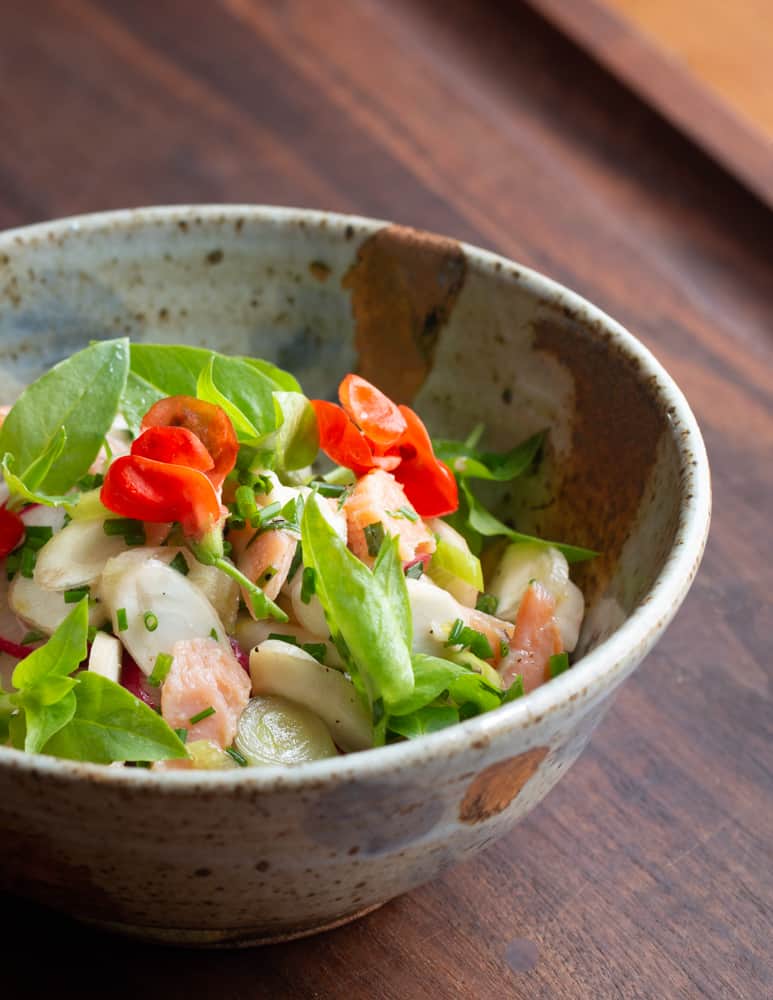
I'd cooked with the lateral rhizomes of cattails (Typha latifolia) before, but it had been a few years, so I was excited when Sam Thayer mentioned that he'd be harvesting some for me to cook with for the meal at the end of the episode.

Cattail Rhizomes
Most people I know are familiar with cattail shoots, but if you've read Sam Thayer's book The Forager's Harvest (just buy it already if you don't have it) you might know that the rhizomes can be eaten too.
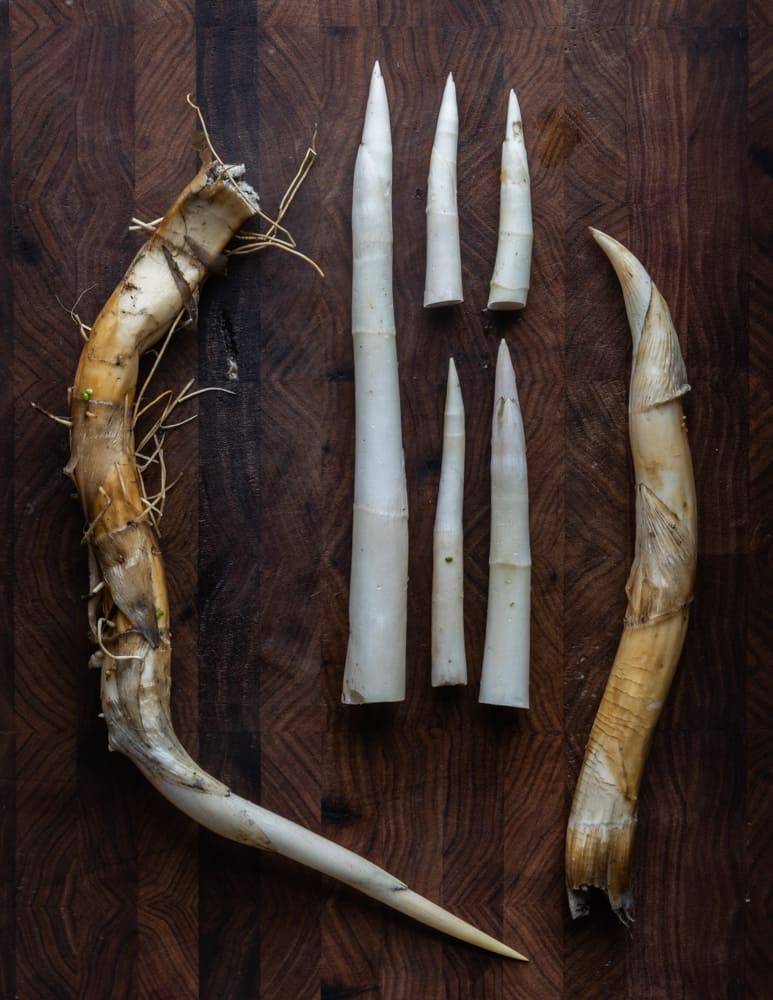
Growing in the muck at the base of cattails, the edible lateral rhizomes resemble a white spear sprouting from the brownish rhizome base. All cattails have rhizomes, but not all rhizomes will make laterals, as Sam's coined them. If I remember correctly, Sam mentioned that maybe one in three plants will have rhizomes sporting a lateral.

To find cattail plants with a lateral, you have to search with your hands in the mud, feeling around the base of the plant for the tell-tale shape that resembles a white spear. Depending on where the cattails are located, this can mean being completely underwater while you yank the rhizome free from the base of the plant.
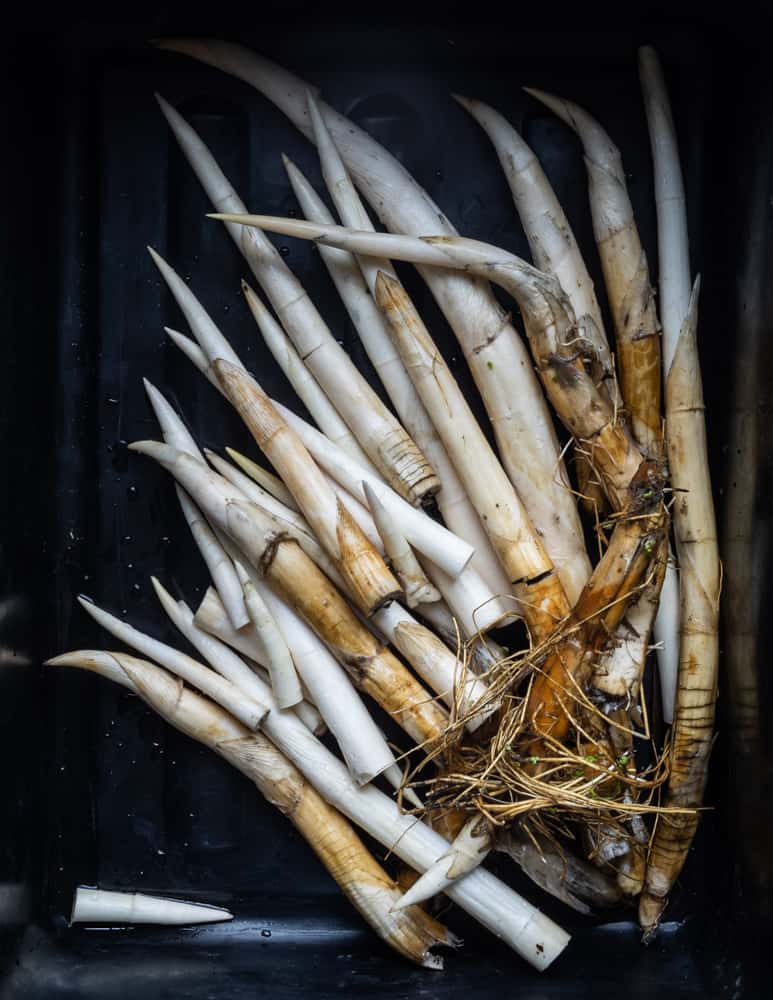
Daniel's been around the country filming his foraging show for years now, but he made sure to mention to me that harvesting cattail laterals was one of the more difficult things he's done. Let's just say he was reminded that leeches inhabit the same area *shudders*, meaning you might be paying for your meal in blood.
Preparing the rhizomes
After the rhizomes are harvested, they need to be washed of any clinging mud, and then the tender white portion is broken off from the attached brown rhizome base. The rhizome base can be peeled of it's tough skin and chewed or cooked, but it will be tougher than the meristematic (young and tender) white spear.
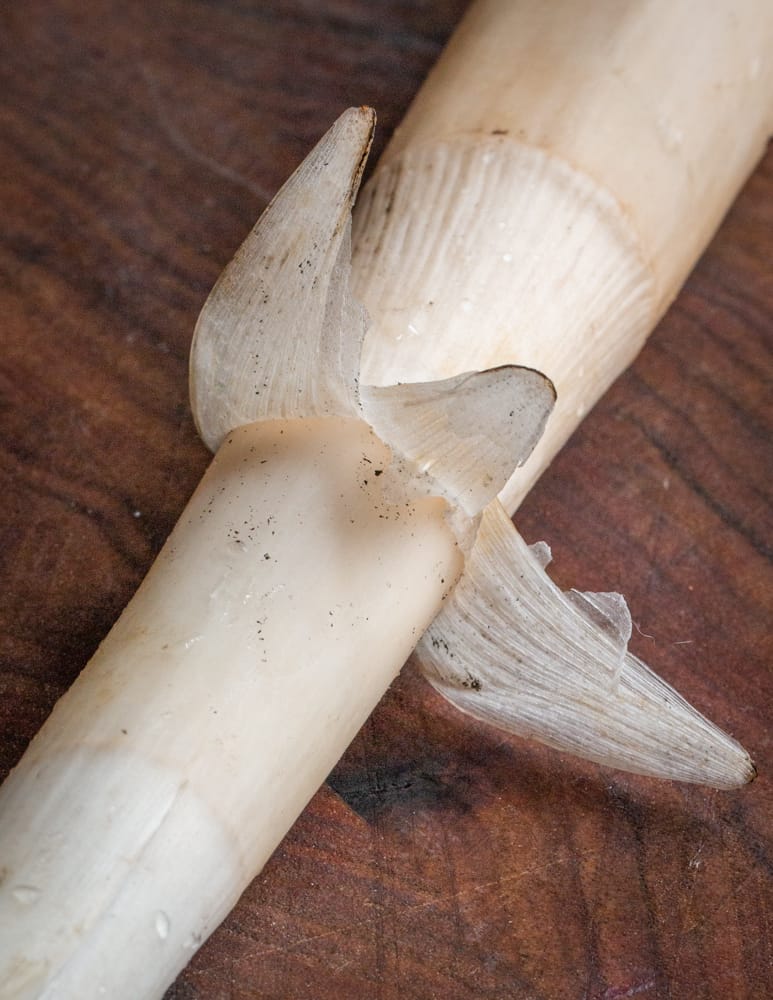
After washing, the white spear portion of the rhizome should be relatively clean, but, just like asparagus, there's a thin sheath-like covering that clasps the rhizome which can trap dirt inside. These should be peeled off and the rhizomes washed and inspected a second time before eating.

As far as cooking, there's a few options. You can cook the rhizomes and they're fine like that, but the best way to eat them is raw, shaved into pieces or simply crunched like some kind of primordial carrot. They're crisp, refreshing, faintly sweet, with a subtle resemblance to cucumber.
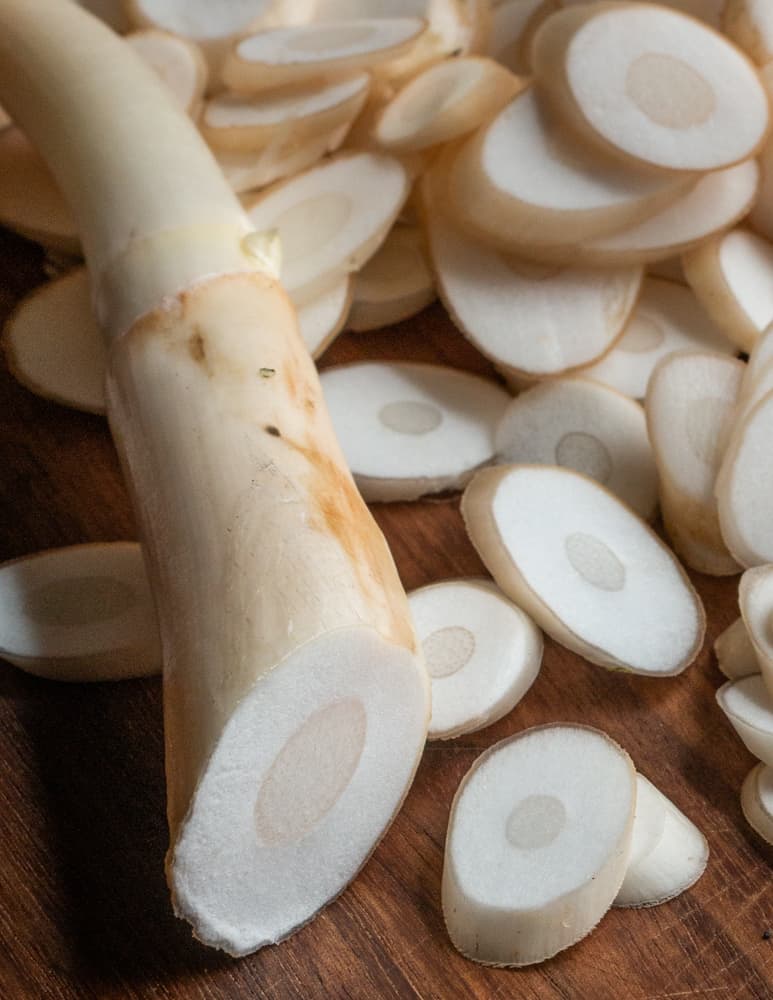
An Aquatic Salad
As I worked on the dishes for the shoot, I knew I wanted to make something to honor the ingredient and where it came from. Shaved thin and tossed with flaked, smoked rainbow trout they make a nice homage to aquatic edibles.
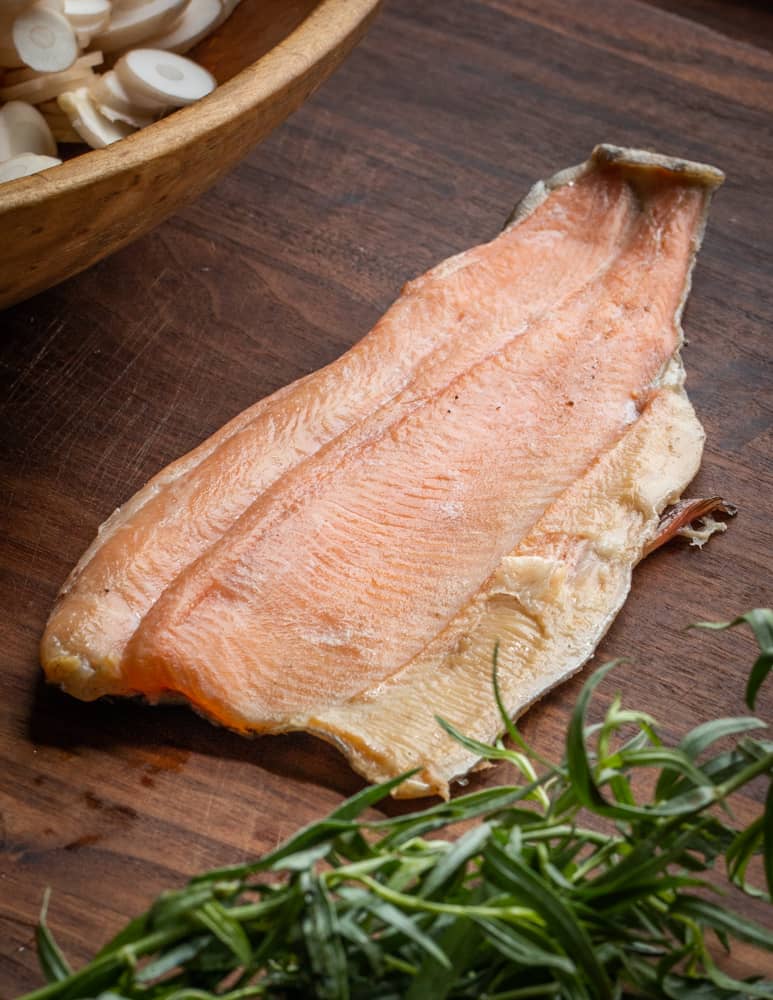
You could use other smoked fish here, but the beautiful salmon color of rainbow trout, steelhead, or salmon add a nice splash of color and savory taste that's the perfect contrast to the mild, crisp rhizomes.
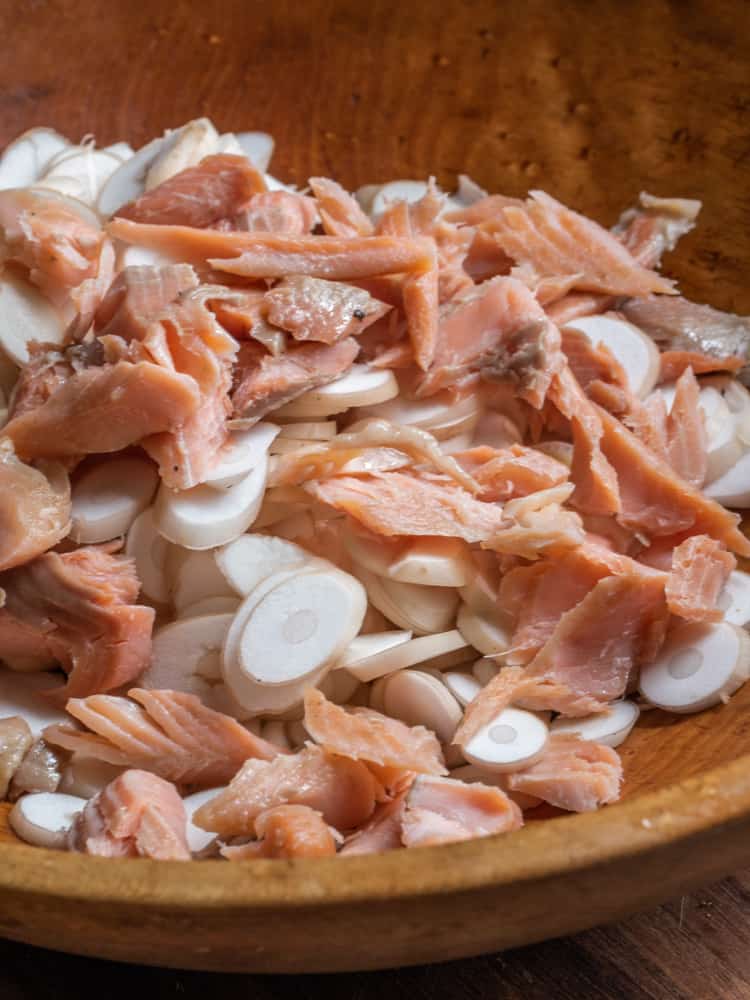
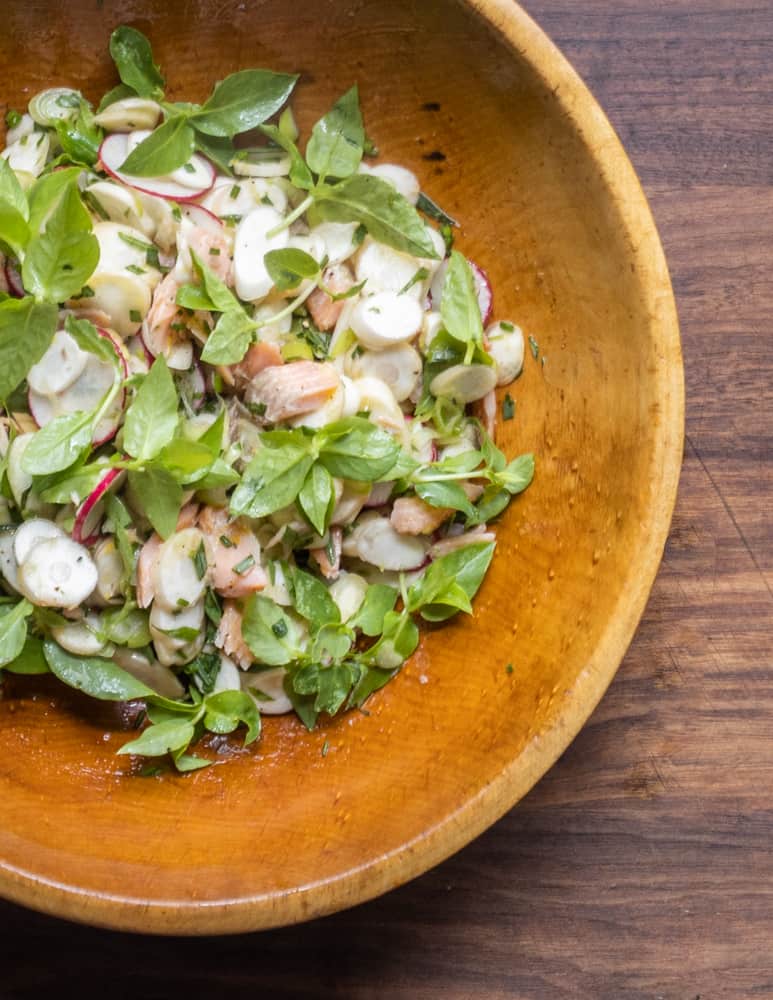
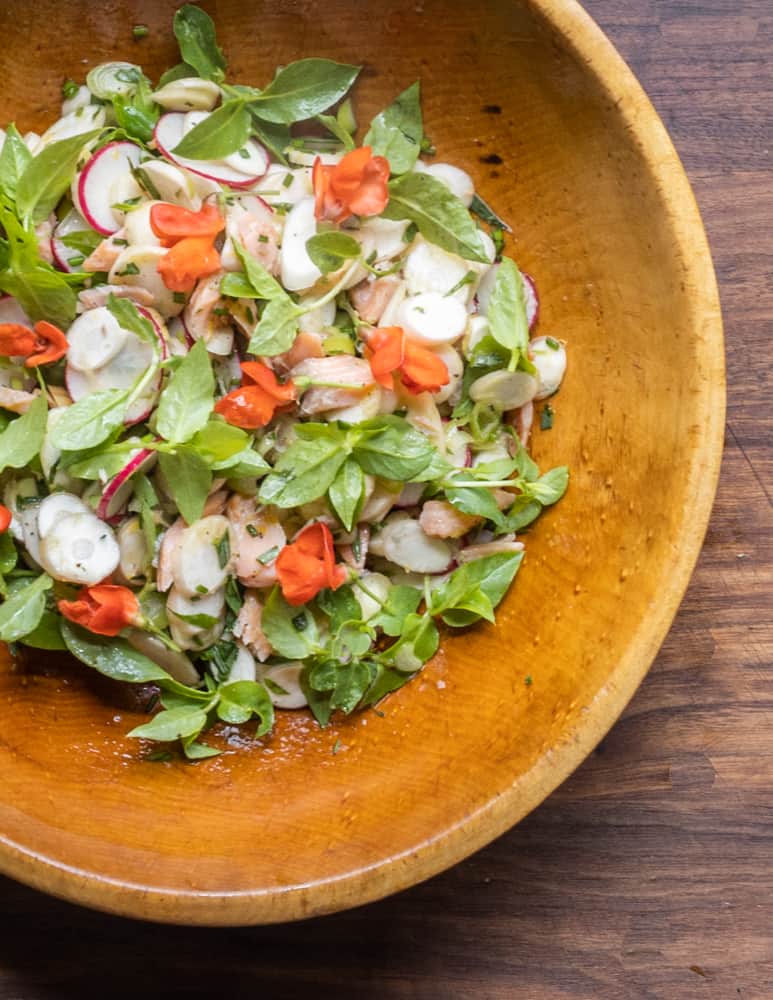
From there I add some lemon zest and juice, fresh tarragon or another herb like basil or mint, a handful of scallions and shaved radishes, and some purslane or chickweed tips for color and texture. Smoked fish and mild vegetables love chives too, so I use plenty of them.

The finished salad is delicious, crisp and refreshing, but it also makes a statement. When you read the title, you might expect to see a few slices of cattail shoot in a green salad. Wild food is often about dealing and managing abundance and the gluts of Nature, so using the cattails as the base of the salad itself is a way you can channel that.
When you have a large amount of any ingredient, it's only natural for it to be the focal point of a dish as opposed to a garnish.
Can you substitute cattail shoots for rhizomes?
Potentially, but they're not quite the same. The tender, peeled shoots of cattails harvested in the spring can be used, and they're much easier to harvest without the mud and leeches.

That being said, if you try it, know that some people can get a tingling in the throat from eating raw cattails. It's never been an issue for me, but it's definitely a thing.
Special thanks to Dotty Bacon for the runner bean flowers that gave the perfect splash of color to finish this for the cameras.
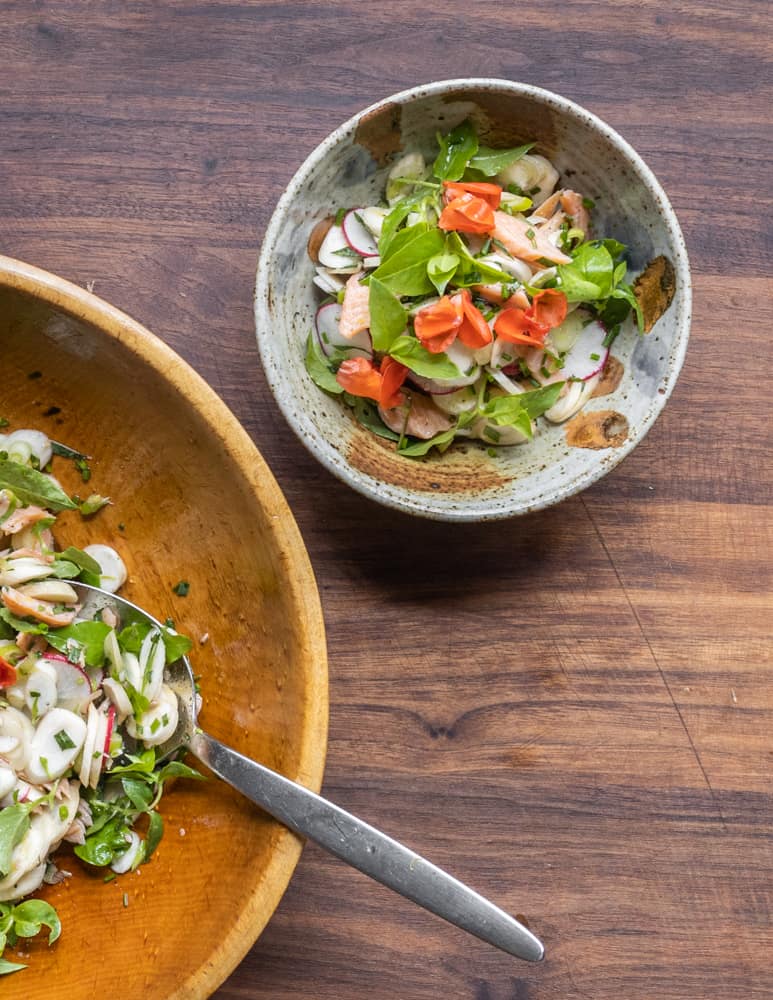
Related Posts
- Cooking with Pollen
- Cattail and Milkweed Shoot Salad
- Marinated Cattail Hearts
- Spaghetti with Cattail Pollen Sauce and Marigolds
Cattail Rhizome Salad with Smoked Trout and Chickweed
Ingredients
- 4 oz cattail rhizomes
- 3 oz smoked trout
- 1 oz radish
- 1 oz scallion, thinly sliced
- 1 tablespoon chopped fresh tarragon
- Fresh lemon zest and juice, to taste
- Kosher salt and fresh ground black pepper
- 1-2 oz Purslane or chickweed tips (a handful to taste)
- Fresh cut chives, to taste
- ¼ cup salad oil such as extra virgin olive oil or Sam Thayer’s Hickory Nut
Finishing
- Edible flowers, to garnish, optional (runner bean flowers are pictured)
Instructions
- Wash the cattail rhizomes in water to clean them of any clinging mud. Break the white part off from the brown-ish rhizome portion (if attached). The method here is similar to asparagus as it should break off where it’s tender. You should be left with firm, white spears.
- Inspect each of the rhizomes for the thin sheath-like covering that clasps the rhizome, peeling it off and inspecting for any dirt that may have gotten underneath, again, just like asparagus. Once you’ve removed any remaining sheath, wash the rhizomes again if needed.
- Using a mandoline, shave the cattail rhizomes ⅛th inch thick and transfer to a mixing bowl. Shave the radish on the mandoline and add it to the bowl, along with the scallions. Flake the smoked trout into pieces and add to the mixture.
- Season the salad with the lemon juice and zest, oil, tarragon, chives, salt and pepper and mix well. If you have some purslane tips to add, you can add them now. If you have chickweed tips or a green that will wilt as it sits, add it just before serving.
- Allow the salad to macerate for 5-10 minutes, tossing occasionally. Before serving, double check the seasoning for salt, pepper, oil, herbs and lemon and adjust until it tastes good to you.
- Just before serving, toss in the chickweed tips if using, reserving some to garnish at the end. Scatter some edible flowers and extra chives over the top of the salad along with a few extra chickweed tips and serve.


Laura
the mullet LOLOL
Alan Bergo
IK right.